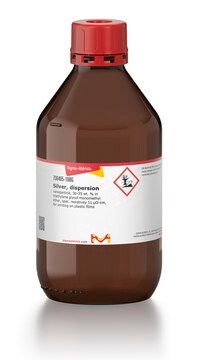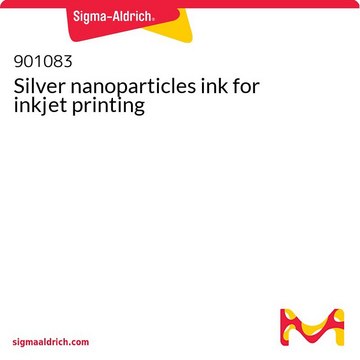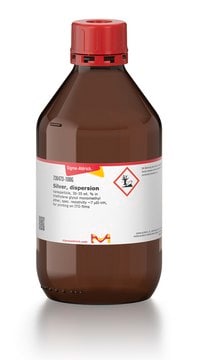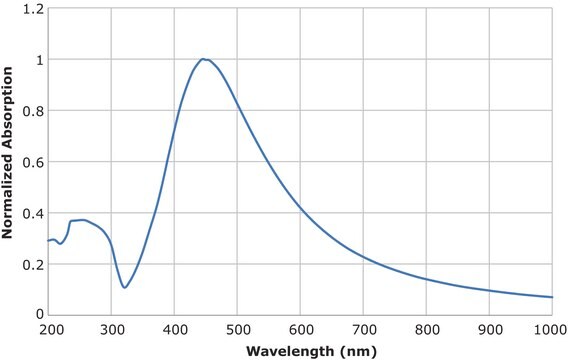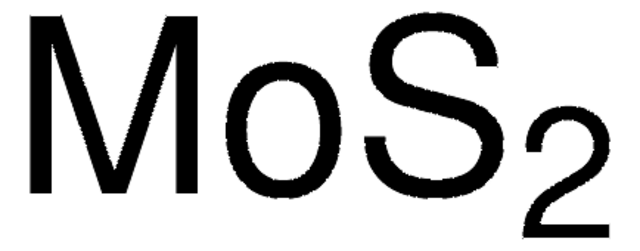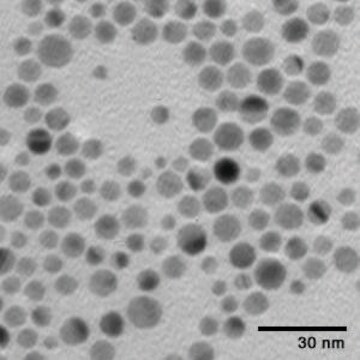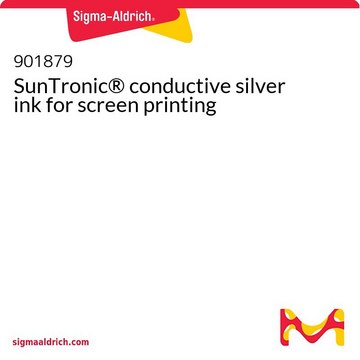736503
Silver, dispersion
nanoparticle, 50-60 wt. % in tetradecane, spec. resistivity ~ 2.7 μΩ-cm, for printing on polyimide films
Synonym(s):
Silverjet DGH-55LT-25C, silver ink
About This Item
Recommended Products
description
surface tension 27 - 31 dyn/cm
form
dispersion
nanoparticle
concentration
50-60 wt. % in tetradecane
refractive index
n20/D 1.333
particle size
≤10 nm
viscosity
7-14 cP
density
1.5-1.8 g/mL at 25 °C
storage temp.
2-8°C
SMILES string
[Ag]
InChI
1S/Ag
InChI key
BQCADISMDOOEFD-UHFFFAOYSA-N
Looking for similar products? Visit Product Comparison Guide
General description
Curing Temperature: 250 °C
Recommended substrates: Polyimide films
Recommended washing solvent: Non-Polar Solvents: Xylene, Hexane, Octane etc. (Hydrocarbon)
Legal Information
Signal Word
Danger
Hazard Statements
Precautionary Statements
Hazard Classifications
Aquatic Acute 1 - Aquatic Chronic 1 - Asp. Tox. 1
Supplementary Hazards
Storage Class Code
10 - Combustible liquids
WGK
WGK 3
Flash Point(F)
219.9 °F
Flash Point(C)
104.4 °C
Choose from one of the most recent versions:
Already Own This Product?
Find documentation for the products that you have recently purchased in the Document Library.
Customers Also Viewed
Articles
In the past decade, the family of digital printing technologies has evolved from being just a tool to visualize information into a generator of functionalities.
The ability to pattern conductive electrodes is technologically relevant for several applications, including photovolatics, displays, sensors, and biomedical devices.
The emerging field of printed electronics requires a suite of functional materials for applications including flexible and large-area displays, radio frequency identification tags, portable energy harvesting and storage, biomedical and environmental sensor arrays,5,6 and logic circuits.
Dr. Chan and researchers highlight flexible transistors are the building blocks of next-generation soft electronics. Among all the reported material systems that can be fabricated by researchers, such as circuits, biosensors, stretchable displays, and others,1–5 small molecular weight organic semiconductors are among the most promising candidates for flexible transistor applications. For these small molecular weight organic semiconductors, the semiconductor forming the conductive channel dominates the device performance.
Our team of scientists has experience in all areas of research including Life Science, Material Science, Chemical Synthesis, Chromatography, Analytical and many others.
Contact Technical Service
